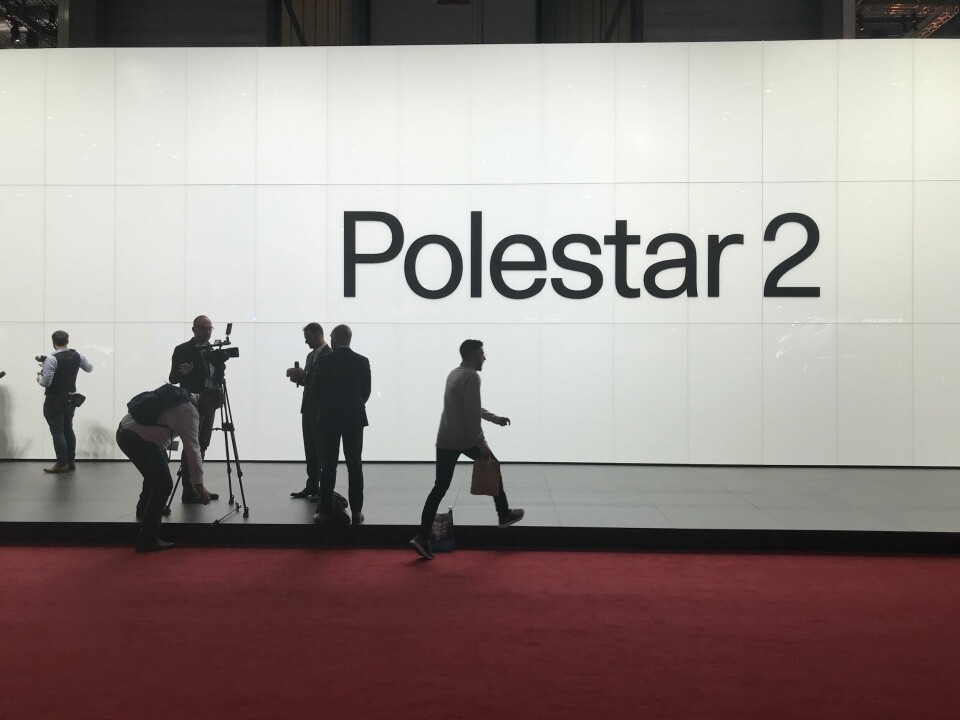
Par Heyden on Designing Polestar Spaces
Polestar Spaces will be the retail and customer interaction point of contact for the new electric performance brand
By the mid-2020, Polestar aims to have opened up to 60 Spaces around the world, in major metropolitan centres, to support the key launch markets for the brand. The first Polestar Space will be located downtown on Øvre Slottsgate, Oslo and opens in mid-2019.

The difference between a Polestar Space and a traditional car dealership goes beyond cosmetics. Polestar cars are ordered online, visiting customers will not experience commission-based salespeople or be asked to sign a contract. Instead the aim is for them to focus entirely on getting to know the brand and its products both digitally and physically. For visitors to the Geneva motor show this year, the stand was the source of much discussion, and was a memorable design statement.
?UMBRACO_MACRO macroAlias="RTEImage" image="547979" caption="Polestar 2's Geneva stand Space" lightbox="1" position="left" size="large-image" ?
Design departments getting involved in designing show stands is not that new, many carmakers have seen the sense of this for a while, but the Polestar stand was quite unlike anything CDN has seen at a show before. It was an Instagrammer’s dream. Next week, in Shanghai, Polestar will be presenting Polestar 2 before the motor show begins in another, meticulously designed Space.
From communications to show stands, to its buildings and retail Spaces, Polestar the brand is the product of countless iterations and a devilish attention to detail.
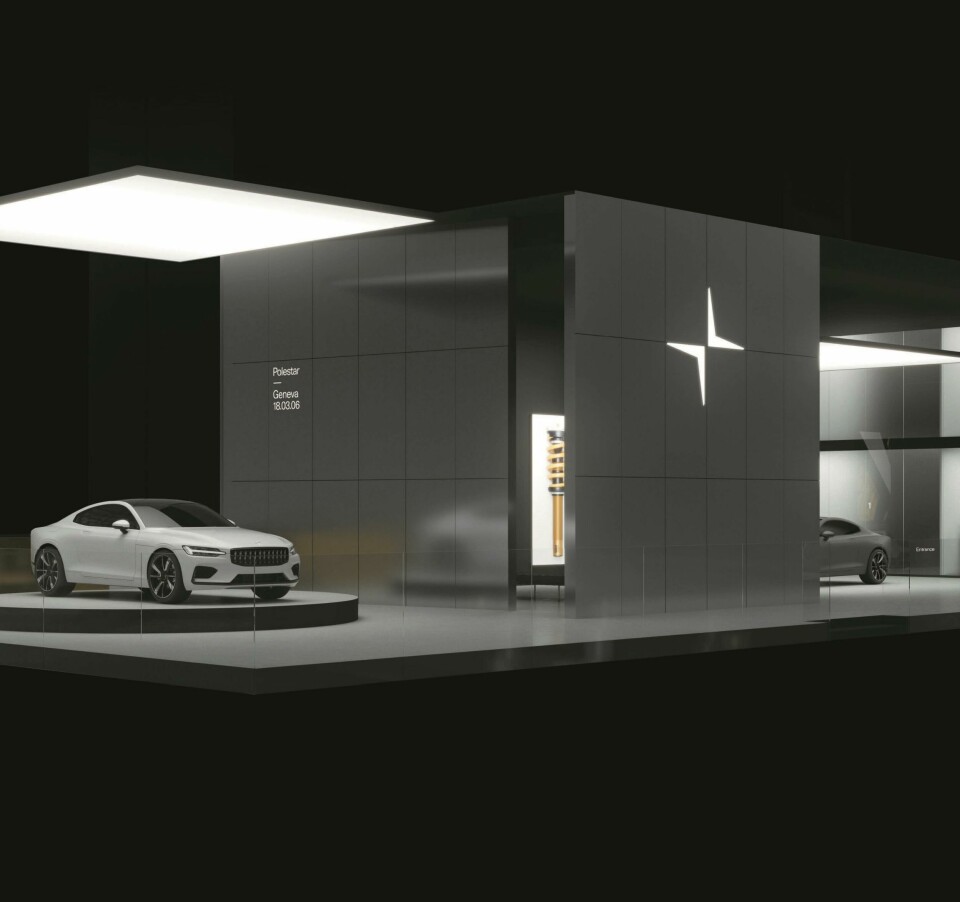
“I think when we started developing the Polestar brand, we were bouncing many ideas around. The brand framework actually began as a conversation between me and Thomas [Ingenlath, Polestar CEO],” says Pär Heyden,” Polestar’s Head of Brand. “We were having a discussion ‘if Volvo is this, then what is Polestar…?’ We needed to find a way of allowing the two brands to live side by side, and discover how Volvo can benefit from Polestar.
?UMBRACO_MACRO macroAlias="RTEImage" image="547972" caption="Head of Brand, Polestar, Pär Heyden" lightbox="1" position="left" size="large-image" ?
“The human-centric approach runs through everything Volvo does. Volvo has had that as a starting point since 1927. We don’t shy away from the fact that we’re part of the Volvo family, but things have changed since Volvo was established. So if we applied the same approach now to the creation of Polestar, what would that mean?
“We decided that we believe that the future of mobility is electric. It’s uncomplicated. We care about people, as the Volvo founders did, but we differ in that we’re not trying to satisfy everyone – we would rather target a few specific people and say we’re going to try and make the best effort possible to satisfy their needs.” That single focus for Polestar is key to understanding the difference between the two brands, and how the newcomer builds on the reputation of its established parent:
“Our role in the Volvo family is to be the guiding star, which we’ve said from the beginning,” explains Heyden. “We should be the explorer, the forerunner. We should build an office building that stings – when people come to work at Volvo, they should see the building and feel even a bit jealous, but also that they should shape up! But in reality, Polestar is a test lab that paves the way for Volvo.”
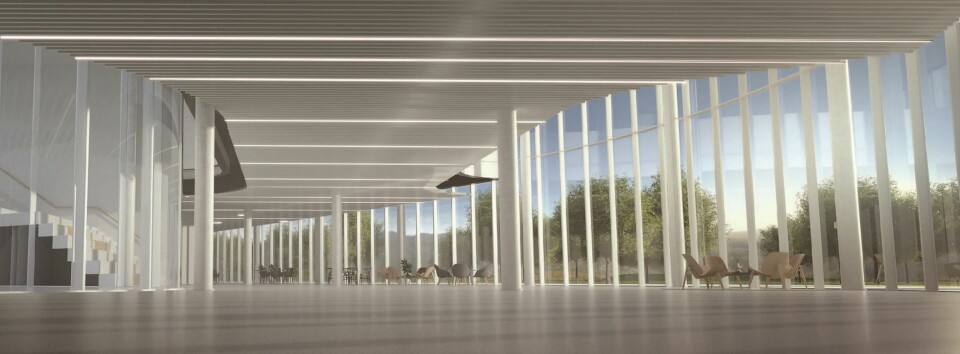
The way that the brand communicates, both about itself and with its customers, has been subject to the customary Polestar rethink. So instead of rehashing tired automotive clichés of oversized billboards and shouting TV ads, Polestar considers its customers more discerning. After all, if you have to spend so much on marketing, then what’s wrong with the product? Instead, the firm established that it should be intensely product focused, removing anything extraneous:
“What we set out to do is a completely different level of communications, stripping away all the lifestyle stuff,” adds Heyden. “That’s up to the customer, and Volvo and so on to worry about. We just want to be really nerdy, strip things away and just have a conversation; person-to-person about our product.
“Volvo would always present its products in a Scandinavian setting – with the right house and the right guy with the right beard in the background. We think our products don’t need that. Our customers already have the lifestyle they want, it’s just the product that’s important.”
It’s interesting to ask about Polestar’s relationship with Scandinavia. Volvo has made its entire reputation on its link with Nordic design and lifestyle. So what’s Polestar’s point of reference? The answer, it turns out, isn’t geographic at all. Heyden continues: “Volvo should always stick to its Scandinavian roots, but we don’t think that we need that. If we have a reference, it’s more an unspecified point in time in the near future. Like Star Wars, set ‘a long time ago in a galaxy far, far away.’ But still everything looks like it’s futuristic – so every time we design anything, and every picture we take, we’re aiming for this time-shifted idea. Polestar is sci-fi without the ‘fi’ – it’s sci-fact!”
As with an ever-increasing number of new car purchases, Polestar’s customers are likely to have their first interaction with the brand online. Unsurprisingly, thought has gone in to the tone of that communication: “We want to be authentic and meet our customers at eye level – to respect them. No superficial stuff, we want to share our journey, the truth, like you can see on the Journals we publish on the Polestar website. Everything is in there too, even things that don’t go to plan, but we want to be open about things we’re struggling with, and hopefully that’ll help bring enthusiasm.
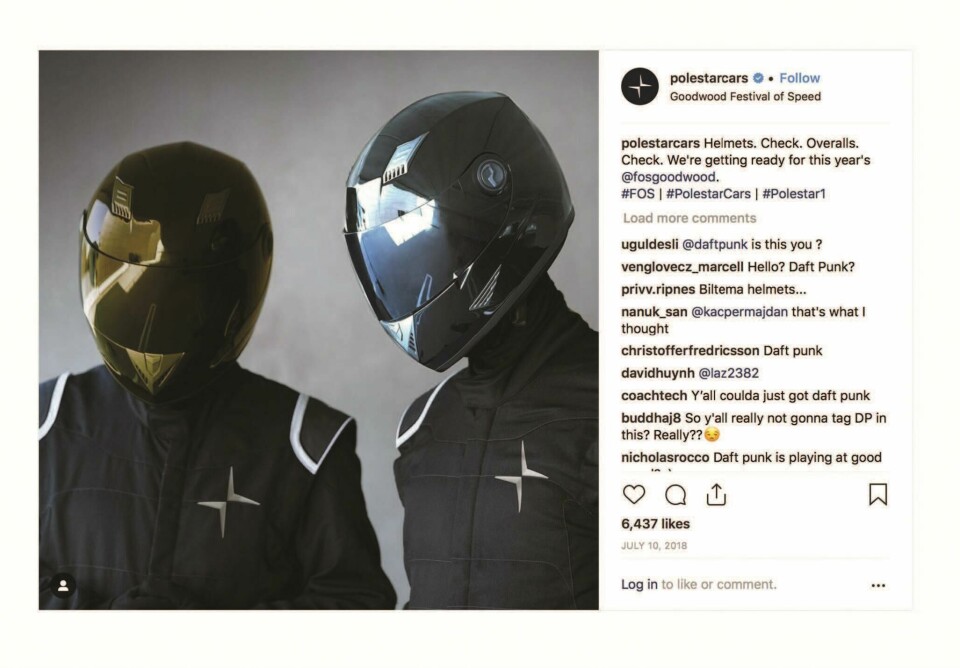
“We understand customers have already moved beyond what the traditional carmakers give them. We don’t have to be dead serious about everything. We did a thing about Daft Punk on social media and people loved it. Once in a while we can drop in these references that show we’re not the old guys in suits, we’re on your level.”
?UMBRACO_MACRO macroAlias="RTEImage" image="547978" caption="A playful touch was applied to marketing at Goodwood FOS with the social media feed" lightbox="1" position="left" size="large-image" ?
Bringing Polestar into the real world is the job of its retail Spaces. However, as with the cars, the environments are a far cry from the soulless dealerships so familiar from countless out-of-town industrial parks. Instead, they bring the cars, and the entire brand experience right into the centre of cities, beginning with the first in Oslo, Norway, before rolling out around the world.
“The design of the Spaces began very early,” says Heyden. “We were looking at how we could make a physical representation of the Polestar brand in city centres where it could stand out. We used things like churches and galleries and museums to figure out the architectural reason that these buildings create such a special atmosphere.”
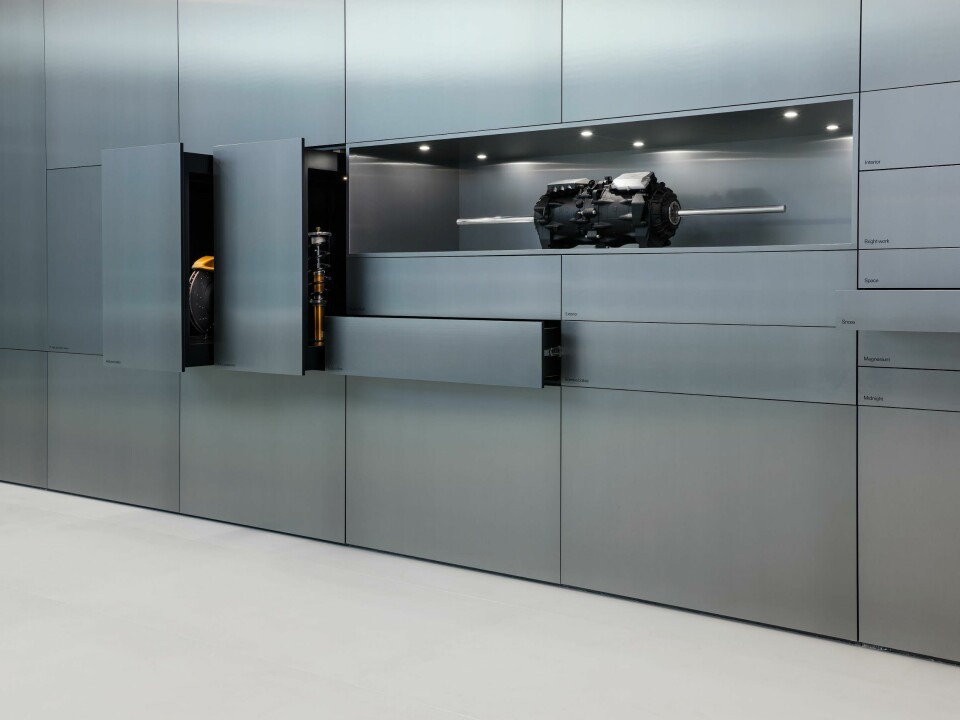
?UMBRACO_MACRO macroAlias="RTEImage" image="547973" caption="" lightbox="1" position="left" size="large-image" ?
Design runs through everything Polestar does, right from the CEO downwards. Interestingly, it’s completely normal to sketch a new car then build a model to prove it works, but that’s an approach being used for the Spaces, too, with a full-scale model of a theoretical Polestar Space for central Berlin being built in a workshop near Polestar’s HQ.
“I come from a design background, and there we do models of everything all the time, says Heyden. “For me it’s just natural to build a model – other people were quite shocked, but I think it really works. It helps refine our idea that we’re not trying to make people feel good in the Spaces, we’re trying to make something that makes people stop and say ‘wow.’ Our idea is to make you feel more like you’re stepping into an art gallery, or a concert hall when you hear the orchestra tuning up – you lower your voice, and focus your attention. Not many retail environments use the mechanics of the architecture to do that.” As a result, furniture is sparse, focusing attention on the products. One novel idea is that you can interact with physical elements of Polestar’s cars, getting a closer look at what makes them drive the way they do:
?UMBRACO_MACRO macroAlias="RTEImage" image="547982" caption="Polestar Space" lightbox="1" position="left" size="large-image" ?
“We decided to take ordinary pieces of the car, like parts of the drivetrain or the dampers, and place them in cabinets and expose them as pieces of art, to take the actual content that we want to elevate, and design everything around it.
The Spaces have an atelier table where you can bring the colour samples or technical pieces so you can look at them more closely. There’s a configurator [touchscreen] built into the table that projects onto the wall. The projector screen is in the same proportion as the light boxes on the wall – we call them our church windows.”

?UMBRACO_MACRO macroAlias="RTEImage" image="547981" caption="Polestar HQ also communicates the brand ethos through design" lightbox="1" position="left" size="large-image" ?
As with an art gallery, all five senses have had to be considered in the development of the Spaces: “We have the ambition for the retail spaces to create architecture that has value and adds a dimension of tension to the experience,” continues Heyden. “We have a sound designer involved in the Spaces. We don’t want to overdo it, but when you enter a Polestar Space, the sound, the temperature, the scent, the lighting, everything is something that we want to control – so we’ve played around with a bunch of scents, but we’ve discovered mostly that people don’t want any scent sudden, for the Geneva show stand, we created a door opening almost by accident when we were playing by folding paper to experiment with volumes. We had in mind buildings like Mies van der Rohe’s Barcelona Pavilion which is just walls and glass in between, and the openings take care of themselves. The approach, and what we think is interesting, is the spaces left between the volumes that we use, creating intrigue. It was something we only discovered for the show stands when we put it outside, to let the sun in. As a result, the statement that the stands made, and the message it sent, was well received.”
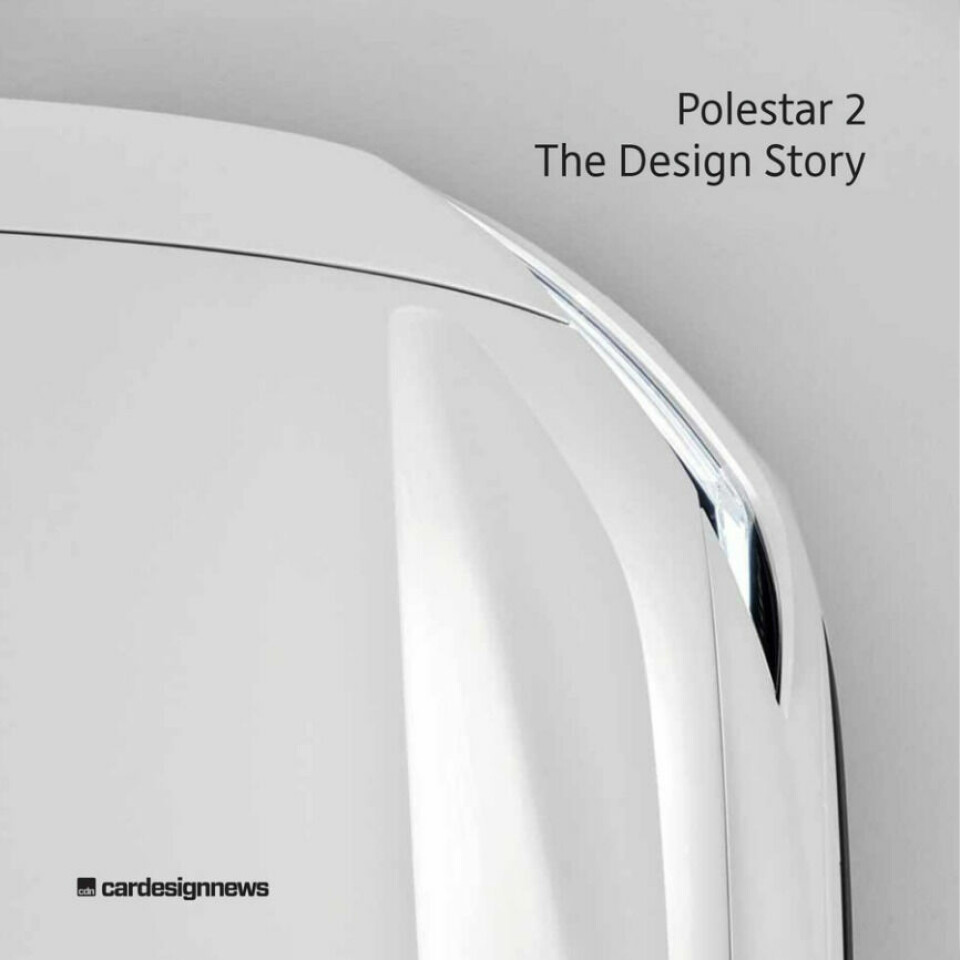
?UMBRACO_MACRO macroAlias="RTEImage" image="547980" caption="Interior space within Polestar's new Chengdu facility" lightbox="1" position="left" size="large-image" ?









